

Vol. 38 (Nº 33) Año 2017. Pág. 4
Muhabbat Madievna MAKHMUDOVA 1; Anna Michailovna KOROLEVA 2;
Received: 20/05/2017 • Approved: 01/06/2017
ABSTRACT: The article characterizes criteria that refer firms to subjects of small business in accordance with the Russian legislation, and distinguishes the notions “micro-enterprises” and “small enterprises”. The work shows the specificity of economic activity of small enterprises in the modern context, and their favorable impact on the state of the economic system. It also describes the dynamics of indicators related to developing small business in the modern Russian economy. The article analyzes statistical data for the period from 2012 till 2016 in relation to the state of small entrepreneurship, and researches the dynamics of the number of small enterprises. The authors pay special attention to the sectorial structure of small entrepreneurship of the national economy. The article considers peculiarities of re-allocating employees involved in small enterprises of various sectors, and analyzes the investment activity of small business. |
RESUMEN: El artículo caracteriza los criterios que remiten a las empresas a los sujetos de las pequeñas empresas de acuerdo con la legislación rusa, y distingue las nociones de "microempresas" y "pequeñas empresas". El trabajo muestra la especificidad de la actividad económica de las pequeñas empresas en el contexto moderno y su impacto favorable en el estado del sistema económico. También describe la dinámica de los indicadores relacionados con el desarrollo de pequeñas empresas en la economía rusa moderna. El artículo analiza los datos estadísticos para el período de 2012 hasta 2016 en relación con el estado del pequeño emprendimiento e investiga la dinámica del número de pequeñas empresas. Los autores prestan especial atención a la estructura sectorial del pequeño emprendimiento de la economía nacional. El artículo considera las peculiaridades de la reasignación de los empleados involucrados en pequeñas empresas de diversos sectores, y analiza la actividad de inversión de la pequeña empresa. |
In the economy of any country small business is the most important economic, social and political factor that defines its development. In the developed countries enterprises of small and medium-sized business play a great role in forming a medium class, employing a considerable part of the population, and replenishing the budget of the country (Kropin, et. al. 2012).
The most important economic functions of small business are defined by its role as an employer, goods and services producer, a tax payer, an innovator and an economic agent. It is necessary to remember that small business plays the most important social role. Thus, organizing small enterprises, some people implement their creative and entrepreneurial potential. Vulnerable groups (females, youth, students, disabled people, retired people, etc.) are involved in production. Servicing enterprises actively meet people’s need in communication.
Functioning of small business has a number of peculiarities.
Firstly, these are ownership relations related to the integrity of the manager and owner of the enterprise.
Secondly, this is an efficient system of personnel motivation based on the integrity of goals and personal interrelations of owners and employees.
Thirdly, as a rule, a high degree of competition on the sales markets does not enable the firm to control prices and volumes, and forces the enterprise to constantly improve quality, service and other additional characteristics.
Fourthly, this is servicing of a small number of consumers which stipulates personal, personified nature of interrelations between the enterprises and clients.
Fifthly, this is strong dependence of the enterprise activity results on the personality of its head who plays a key role in organizing the production process.
Sixthly, this is the high involvement of relatives into the process of the enterprise activity, because small business, as a rule, has a family nature.
Seventhly, these are peculiarities of financing small business related to the fact that the enterprises cannot rely on involving funds from third parties, fund exchange institute, but it focuses on relatively small bank credits, its own savings or loans from friends.
And eighthly, it is a high share of the turnover capital as compared to the fixed assets. On average, at large enterprises the correlation of the turnover capital as to fixed assets is 20:80, while at small enterprises it is 80:20 (Ragulina, 2014).
The above peculiarities of small business, on the one hand, can specifically limit its development (for example, the narrowness of the sales market, deficit of financing, etc.), and, on the other hand, they can reflect its strengths. Thus, small business has a number of advantages over large enterprises such as closeness to local markets and accurate focus on the clients’ needs, opportunity to produce small lots, the lack of unnecessary management levels, etc. Small business possesses something large companies try to achieve by using a marketing mix – demand differentiation and individualization (Link and Ruhm, 2008).
During their research the authors used general scientific methods. Based on scientific abstracting, the retrospective analysis of basic approaches to characterizing small business was made. The methods of data comparison by graphic interpretation of data and methods of its grouping were used. The dynamics and structure of basic indicators that characterize modern tendencies of small entrepreneurship in the Russian Federation were described.
As a whole, the development of the small entrepreneurship sector has a positive impact on the development of the competitive environment, creation of additional workplaces, increase in the population’s profit, and improvement of the life quality (Rennie 2013). That is why in the developed countries the share of those who are involved in small business is about 50% and the share of the products made by enterprises of this sector also reaches 50% of the country’s GDP (Doing Business 2014). Table 1 shows characteristics of the role of small entrepreneurship in the economy of various countries (Lyubushin and Ionova 2013).
Table 1. Some Characteristics of the Role of Small Entrepreneurship in Some Countries
Economy (A Partial and Fragile Recovery, 2014; Liu 2008; Tang, 2013)
Country |
Share of employees in the total number of the employed, % |
Minimum interest rate for business, % |
Number of small enterprises, thous. units |
Share of small enterprises in the total number, % |
Number of small enterprises per 1 thous. of inhabitants |
Share of small enterprises in the country GDP, % |
Germany |
66 |
2 |
2,290 |
62 |
37 |
54 |
Japan |
78 |
4 |
6,450 |
60 |
49.6 |
55 |
China |
75 |
6 |
3,000 |
90 |
2.2 |
60 |
Singapore |
70 |
5 |
130 |
92 |
25 |
25 |
the USA |
54 |
8 |
19,300 |
87 |
74.2 |
52 |
Great Britain |
49 |
2 |
2,630 |
80 |
46 |
53 |
Australia |
48 |
8 |
- |
96 |
- |
20 |
Russia |
19 |
11 |
836.2 |
37 |
5.65 |
12 |
Unfortunately, in Russia the development of small business considerably lags behind the level of developed countries. For example, the share of small enterprises in the GDP is 10-12%, and the number of the employed is about 15% (Official Website of Supporting Small and Medium-Sized Business in the Tyumen Region).
The world economic literature determines several approaches to criteria referring enterprises to small business. As a rule, they include the indicator of the personnel size, volume of the charter capital, financial indicators and area of the enterprise activity (Small and Medium Entrepreneurship in Russia, 2013).
The Western literature defines three features of the small business enterprise (Lerner 1999):
In the Russian legislation there are three criteria. In accordance with them, firms are referred to subjects of small business (Federal Law dated 27.07.2007 No. 209-FZ “On Developing Small and Medium-sized Entrepreneurship in the Russian Federation”):
- The total share of participation of the Russian Federation, subjects of the Russian Federation, municipal formations, foreign organizations and citizens, public and religious organizations (unions), charity and other funds, organizations that are not referred to subjects of small and medium-sized entrepreneurship does not exceed 25% in their charter capital,
- The average number of employees did not exceed 100 persons for the previous calendar year, and
- The income from selling goods, works and/or services, excluding VAT, did not exceed RUB 400 mln. for the previous calendar year.
Relatively recently statistical measures have started to single out a so called micro-enterprise where the average number of employees for the previous calendar year is not more than 15 persons, and the income does not exceed RUB 60 mln.
According to the data of the official statistics in Russia, above 80% of small and medium enterprises include micro-enterprises that provide every third workplace and create almost 50% of the income (Mahmudova and Koroleva, 2015).
The comparative analysis of approaches to defining small business in various countries can be carried out by using various criteria – size of the personnel, trading turnover, area of activity, etc. The analysis of legislative websites of some countries allowed to compare criteria of small and micro-enterprises (Table 2) (Pletniov, et. al. 2015).
Table 2. Comparative Characteristics of Small Business and Micro-business Criteria
Country |
Criteria |
Micro-business |
Small business |
Russia |
Number of employees, pers. |
15 |
50 (in some cases up to 100 pers.) |
Annual income, mln. EUR |
1.9 |
12.7 |
|
Ukraine (Law of Ukraine dated March 22, 2012 No. 4618-VI “On Developing and State Support for Small and Medium Entrepreneurship in Ukraine”) |
Number of employees, pers. |
10 |
50 |
Annual income, mln. EUR |
2 |
10 |
|
Republic of Belarus (Kozel 2009) |
Number of employees, pers. |
15 |
100 |
Republic of Kazakhstan (Law of the Republic of Kazakhstan dated January 31, 2006 No. 124-III “On Private Entrepreneurship”) |
Number of employees, pers. |
15 |
100 |
Annual income, mln. EUR |
0.29 |
2.9 |
|
European Union (European Union, Definition of Micro, Small and Medium-sized Enterprises, 2003) |
Number of employees, pers. |
10 |
50 |
Annual income, mln. EUR |
2 |
10 |
|
Sweden (European Union, Annexes Accounting Report 2011, Sweden) |
Number of employees, pers. |
- |
50 |
Annual income, mln. EUR |
- |
5.3 |
|
Balance currency, mln. EUR |
- |
2.7 |
|
Norway (Iversen 2003) |
Number of employees, pers. |
- |
19 |
Japan (Sme’s in Japan, a New Growth Driver? Economist Intelligent Unit, 2010) |
Number of employees, pers. |
50 |
100 |
Declared capital, mln. EUR |
0.75 |
2.25 |
|
USA (Table of Small Business Size Standards, 2015) |
Number of employees, pers. |
- |
50 – 1550 |
Annual income, mln. EUR |
- |
0.68 – 495 |
Thus, the comparison of various countries according to the criteria of small business is a rather disputable task. For example, in Norway the criterion of classifying enterprises includes only the number of the occupied people. In the USA, these criteria considerably vary. S. Couper justly notices “In this country Facebook bought Instagram with thirteen employees for USD 1 bln. In spite of the fact that the price of the purchase is very high, I do not think that somebody ceased thinking that Instagram is an example of small business” (Cooper 2012). In accordance with the current legislation of the USA, standards of small business differ for 1,160 subsectors. For example, small business related to oil production can have a maximum number of employees – 1,500 persons, and the one related to retailing can have only 50 persons. The annual income also considerably varies. It is USD 0.75 mln. for grain or rice production, while for companies of the banking sector it is USD 550 mln. per year (Birch 1981). As a result, according to the statistics, in the USA there are 99.7% of small business enterprises (Cooper 2012).
The specificity of small business is related to considerable territorial reference of its activity. That is why small enterprises have a vivid regional nature, and focus on the needs of the local market (Wessner 2009).
In the modern context the developed economic system of any level is more and more based on its small entrepreneurial sector that allows to solve serious economic and social tasks (Mills 2016).
3.2. Analysis of the Activity of Small Entrepreneurial Sector in the Russian Economy
The modern stage of the national small business development is characterized by its cyclic nature stipulated by the present economic instability of the Russian economy (Gompers and Lerner, 2004), and serious transformations of the external economic relations. Thus, for the analyzed period in the structure of the economic activity the number of functioning enterprises of small entrepreneurial sector had decreased by 3.5% in 2013 as to the previous period, and then increased in 2014 (See Figure 1) (Small and Medium-Sized Entrepreneurship in Russia: Statistical Collection). It allows to assume about the timeliness and adequacy of the measures taken in the country and aimed at supporting entrepreneurship and creating favorable conditions for developing entrepreneurial skills in the society. Besides, the dynamics of the number of small enterprises proves their mobility and a high ability to adapt to new economic conditions.
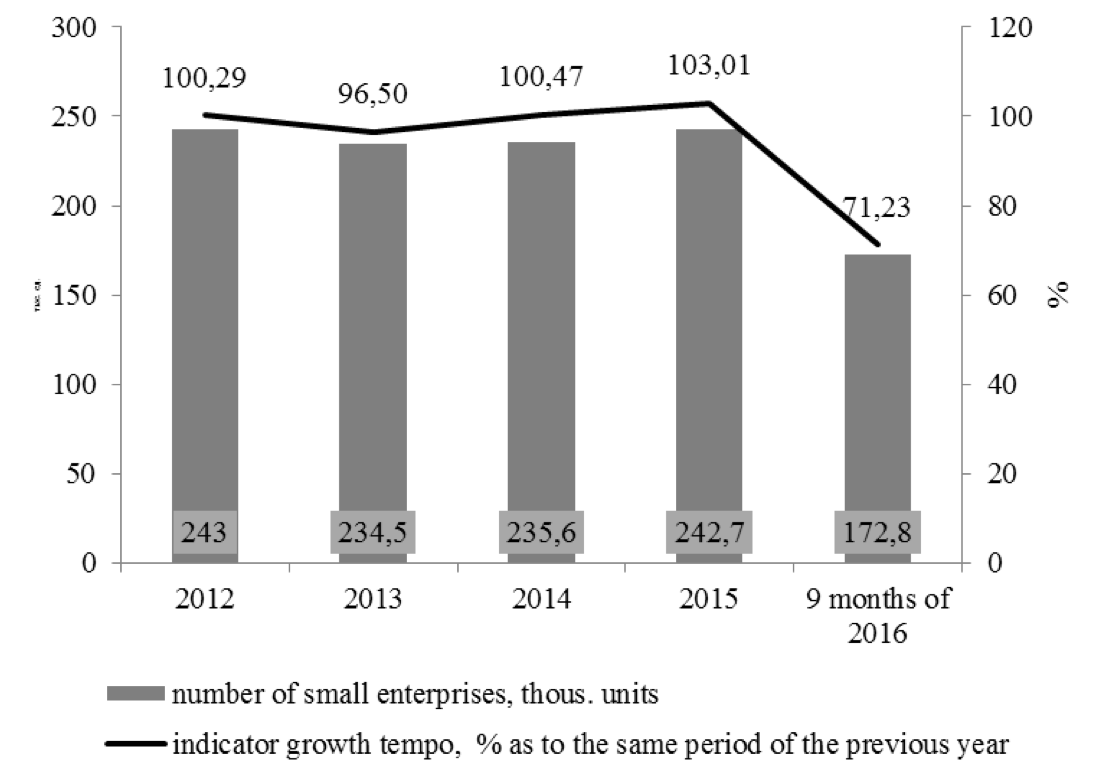
Figure 1. Dynamics of Number of Small Enterprises in the Russian Economy
Today the Russian economy has 172.8 thous. enterprises of the small business area. It shows the negative situation related to decreasing their number as to the same period of the previous 2015. This situation is partially explained by the tendency related to enlarging business emerging in the national economy. Under the comprehensive economic conditions, in order to survive and decrease bankruptcy risks, small entrepreneurial structures “join” medium-sized and large enterprises. However, during the devaluation of the national currency, inflation processes and high interest rates for loans the majority of small enterprises are liquidated.
The allocation of small enterprises according to the areas of the national economy has an unequal nature. The most attractive areas for a small entrepreneur traditionally include trading, providing of consumer services to the population (33.5% from the total number of small enterprises), real estate (above 16%), and construction industry (about 12%) (See Figure 2). The growth of volumes of the sector in Russian regions is observed in the area of the population’s consumer servicing, barber’s services, repair of household appliances, catering, installing windows, and repair of automobile transportation.
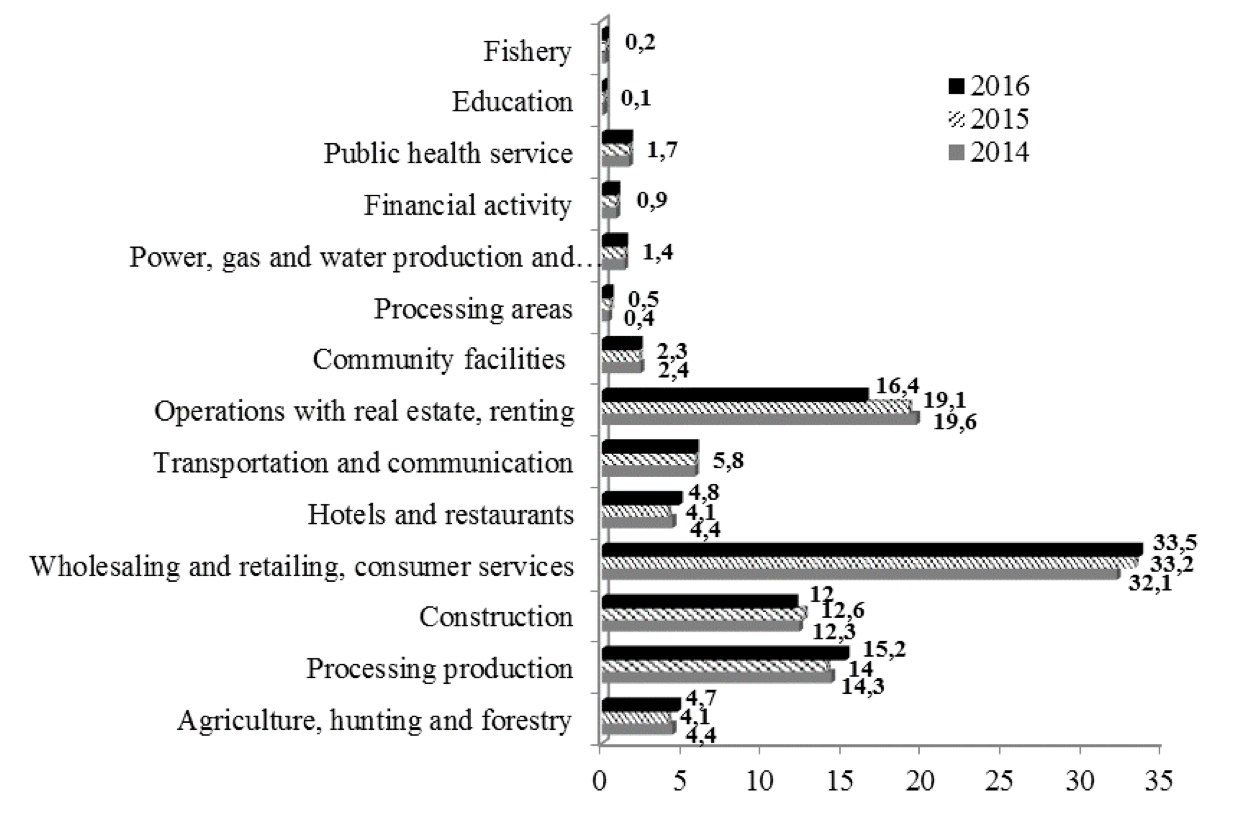
Figure 2. Sectorial Structure of Small Entrepreneurial Sector in the National Economy, % from
the Total Number of Small Enterprises (Russian Statistical Annual Book: Statistical Collection)
In the areas where the material and technical base requires serious capital investments (production industry) or that are strategically important (power, water and gas production and distribution), the number of small enterprises is not large. Herewith, over the recent years there have been no shifts in the sectorial distribution of subjects of the Russian small entrepreneurship.
The efficiently functioning small business occupies stable positions on the national labor market and maintains the stable share of the population employment (about 14%) in the all-Russian indicator (See Figure 3). Due to favorable conditions of the economic activity, subjects of small entrepreneurship increase the volumes of their production, implement new technologies, and master production of new goods and services. Thereby they create additional workplaces in regions for specialists of various professions and qualifications.
For the analyzed period the dynamics of the number of employees at small business enterprises is described by a permanent decrease. Thus, in 2015 6,216 thous. persons worked for small enterprises. This is by 5% lower than the number of the employed in 2012, and by 2.2% lower than the level of the previous period. The increasing the number of operating subjects of small business in the Russian economy, together with the decreasing number of enterprises employees at this period are explained by the strive of entrepreneurs to optimize expenses under the complicated economic conditions. In the context of decreasing consumer and investment demand, a lot of enterprises decreased expenses related, above all, to paying salary by reducing the number of employees. Today the decreasing tendency of the number of employees at small entrepreneurial enterprises is maintained.
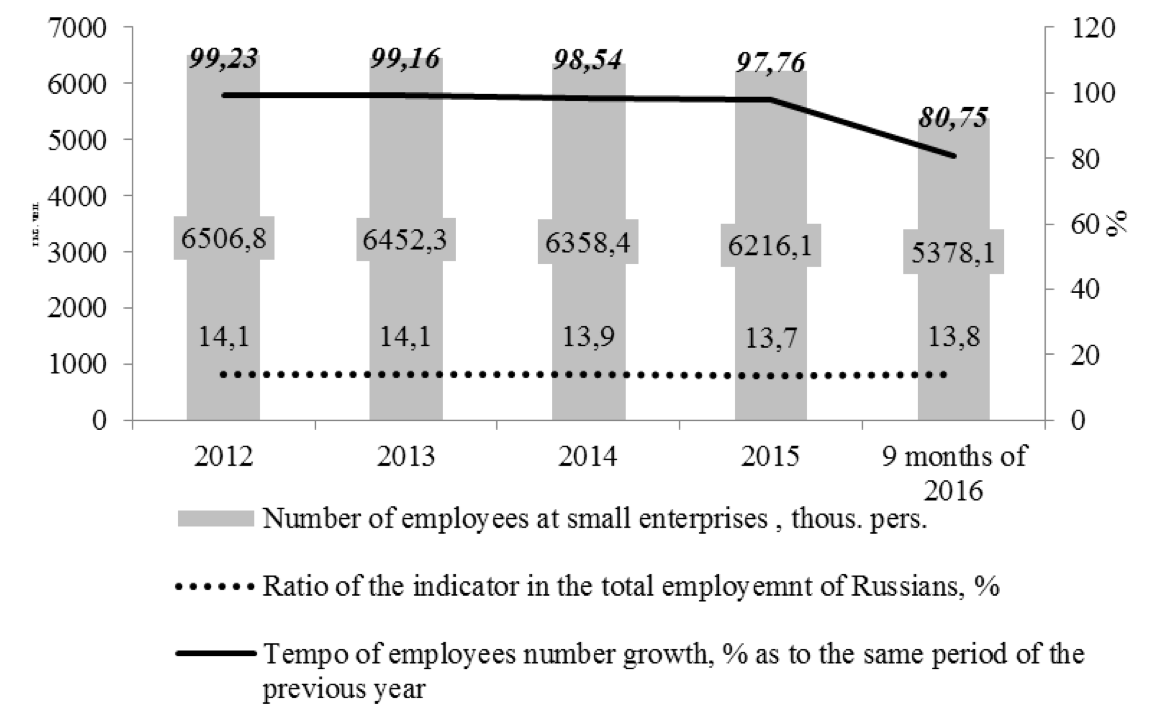
Figure 3. Dynamics of the Number of Employees at Small Enterprises
(Russian Statistical Annual Book: Statistical Collection)
A considerable number of workplaces for Russians are traditionally provided by small trading enterprises and consumer services providers. Their share is above 25% in the total number of employees of the Russian small business (See Figure 4). Above 1,271 thous. persons are employed by real estate and renting companies. This is above 20% from the total number of employees of small entrepreneurial sector of the Russian economy.
The majority of specialists are involved in small enterprises of processing areas (above 17% from the total number of employed in small business), and construction companies (above 850 thous. pers.).
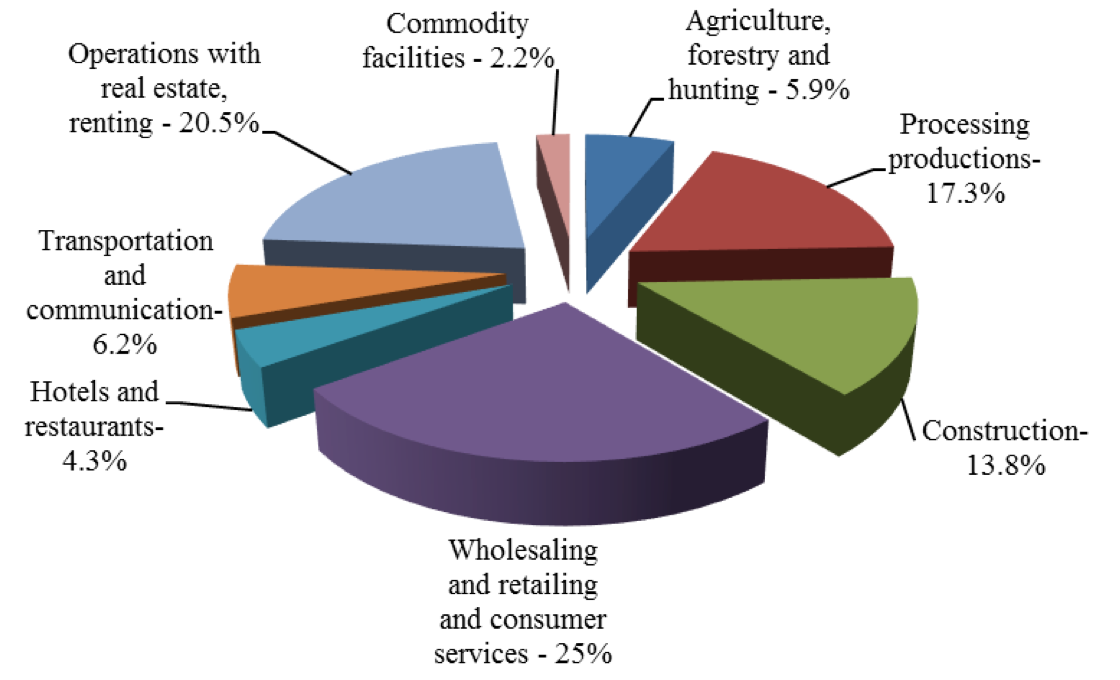
Figure 4. Sectorial Allocation of the Number of Employees of Small Entrepreneurial Sector,
% of the Total Number of Employees of the Russian Small Business (Russian Statistical Annual Book: Statistical Collection)
The expansion of the small entrepreneurial sector in the structure of the national economy during the period under analysis is found in the increase in the economic turnover of small business observed at this period. Thus, the tendency of turnover growth in small sector formed in 2013 is 3.7% of the growth as to the previous period goes on maintaining during the whole period of 2013-2016 (See Figure 5).
The volatile economic environment in the country pre-determined the cyclic nature of the dynamics of tempos related to the growth of the entrepreneurial structures turnover. However, the positive growth did not cease. In 2015 the turnover of the economic activity of the Russian small business was RUB 17,292.8 bln. This is by 3.5% higher than the indicator of the previous 2014, and by 14.4% higher than the 2012 level. Today the positive dynamics of increasing the volumes of the economic activity maintains.
In terms of the sector, the increase in the business activity of the national small business is mainly formed by trading enterprises whose share is above 55% of the aggregate economic turnover of the small entrepreneurial sector. Above 11% of the gross indicator is made by the national construction organizations. Subjects of the real estate and leasing area make a considerable contribution to the formation of the turnover size.
Focusing mainly on the needs of regional markets, Russian entrepreneurs actively participate in the investment activity by investing funds in new construction, expansion, reconstruction and technical re-equipment of the existing enterprises, acquiring machines, equipment, tools, appliances and other objects.
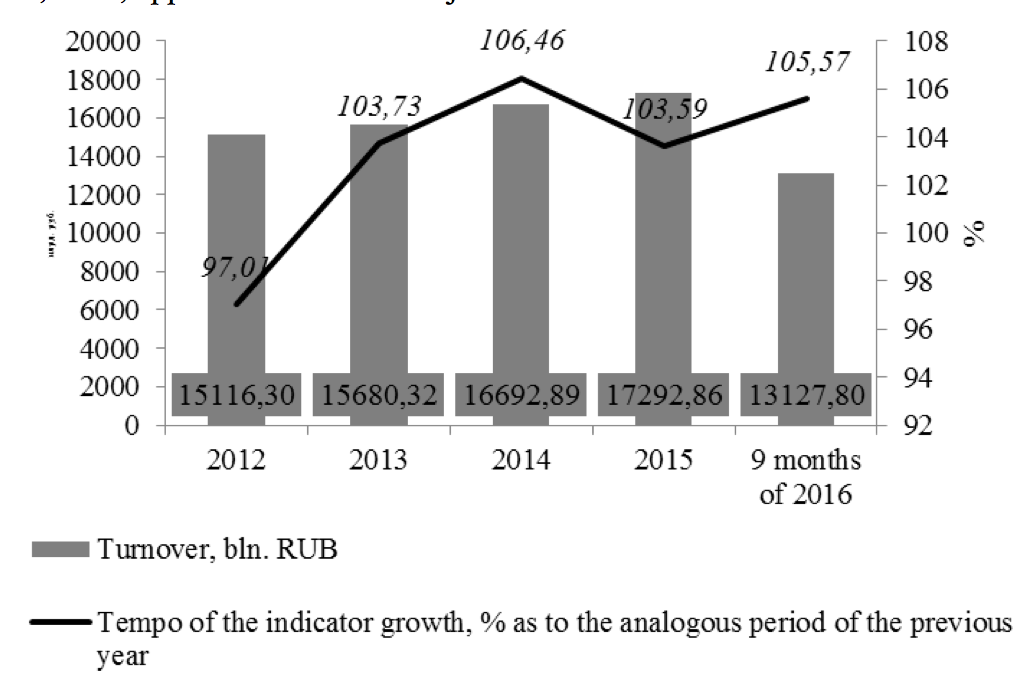
Figure 5. Dynamics of the Size of Aggregate Economic Turnover of the Russian Small Business
(Russian Statistical Annual Book: Statistical Collection)
The dynamics of the investment activity of small entrepreneurial sector of the national economy for the analyzed period is described by instability. Thus, in terms of the 2015 micro-economic instability the positive tendency of the growth of investments in the basic capital of small enterprises formed during 2012-2014 (See Figure 6) has changed by a considerable fall of the indicator by 5% as to the previous period. Worsening of the financial state of small enterprises, continuing devaluation of the national currency, inflation processes, and decrease in the level of the population’s life caused the re-allocation of business finances from accumulating to current consuming. However, high mobility and ability of small enterprises to adapt to new conditions of the economic activity, as well as anti-crisis measures taken in the country and focused on supporting small and medium-sized business stabilized the position of the Russian entrepreneurial sector. For 9 months of 2016 national entrepreneurs invested above RUB 258 bln. in the basic capital. This is by 5% more than for the same period of the previous 2015.
Besides, the decrease in investments made by entrepreneurs in the basic capital is also stipulated by the sectorial structure of small business. Over the recent years the number of small enterprises has increased in the areas that do not require appliances, construction and equipment of production areas (education, health care, financial activity, etc.).

Figure 6. Dynamics of the Investment Activity of Small Entrepreneurial Sector of the National Economy
(Small and Medium-Sized Entrepreneurship in Russia: Statistical Collection)

Figure 7. Regional Differentiation of Indicators Related to Developing Small Entrepreneurship in Russia,
Share in Gross Figure of the National Small Business, % (Small and Medium-Sized Entrepreneurship
in Russia: Statistical Collection)
The development of the Russian small business is characterized by serious regional differentiation. Thus, the greatest focus of small entrepreneurial sector is observed in regions of the Central Federal District, where about 30% of the aggregate of Russian small enterprises operate (See Figure 7). This very region is also characterized by the maximum share of investments in forming the economic turnover of small business (about 40%). However, the most active members of the investment processes in economy include entrepreneurs of the Privolzhskiy Federal District that have only 16.5% from the total turnover of the Russian small business.
Entrepreneurship is developed least of all in the North-Caucasian region. Its territory contains not more than 2% of small enterprises. In regions of the Far-Eastern District there are few small entrepreneurial structures (4.6% from the total number of small enterprises in the Russian economy). They form only 5% of the economic turnover and have small investment opportunities.
Characterizing the role of small business in the state economy, it is necessary to note its considerable impact on the level and quality of population’s life. Due to it, the state support for the small entrepreneurship segment is extremely important because it allows to improve the welfare of citizens, initiativity, self-employment, and to fill local budgets.
The analysis of foreign experience showed that in the countries with the developed market economy the share of small business was 50-95%. However, the comparison of indicators may not be correct due to the lack of the unified analytical base and criteria.
Consequently, it is necessary to continue studying the place and the role of small business in the Russian economy, and to unify indicators that allow to estimate the contribution of small entrepreneurship in the economy of the state.
Thus, it is possible to make the conclusion that the Russian small business is characterized by a considerable regional and sectorial differentiation. The decrease in the small entrepreneurial sector in the Russian economy observed during the period under analysis comes with the release of the labor force which enhances the tension on regional labor markets and causes the decrease of the consumer demand. However, the increase in turnovers of the economic activity of the national small business at this period and intensification of their investment activity allow to suppose about the increase in their efficient functioning and high level of small business development in the modern context.
The programs related to supporting and developing small entrepreneurship implemented in the state form a favorable climate for business becoming, expanding areas and directions of the economic activity, and activating business and investment activity of national economy subjects.
A Partial and Fragile Recovery. Annual Report on European SMEs, 2013/2014, (2014). European Commission, pp. 54.
Birch, D., (1981). Who Creates Jobs? The Public Interest, 65: 3–14.
Gompers, P. and J. Lerner, (2004). The Venture Capital Cycle. Cambridge: MIT Press: pp. 309.
Cooper, S., (2012a). The Government Definition of Small Business is B.S. Forbes, 20, Date Views 22.01.17 www.forbes.com/sites/stevecooper/2012/09/20/the-government-definition-of-small-business-is-b-s/
Cooper, S., (2012b). Instagram's Small Workforce Legitimizes Other Small Start-Ups. Forbes, 17. Date Views 19.01.17 www.forbes.com/sites/stevecooper/2012/04/17/instagrams-small-workforce-legitimizes-other-small-start-ups/.
Doing Business 2014. Understanding Regulations for Small and Medium-Size Enterprises, 2013. A World Bank Group Corporate Flagship. pp. 3-12.
European Union, Definition of Micro, Small and Medium-sized Enterprises, 2003. Date Views 15.01.17 eur-lex.europa.eu/legal-content/EN/TXT/?uri=URISERV:n26026.
European Union, Annexes Accounting Report 2011, Sweden. Date Views 16.01.17 ec.europa.eu/enterprise/policies/sme/business-environment/files/annexes_accounting_report_2011/sweden_en.pdf.
Federalnyiy zakon ot 24.07.2007 # 209-FZ “O razvitii malogo i srednego predprinimatelstva v RF” [Federal Law dated 27.07.2007 No. 209-FZ “On Developing Small and Medium-sized Entrepreneurship in the Russian Federation”]. Russian Newspaper, 4427 dated July 31, 2007.
Iversen, E., (2003). Norwegian Small and Medium-Sized Enterprises and the Intellectual Property Rights System: Exploration and Analysis. Date Views 20.01.17 www.wipo.int/export/sites/www/sme/en/documents/research/norway/norway_study.pdf.
Kropin, Yu.A. and O.A. Panchenko, (2012). Sostoyanie i perspektivy razvitiya subjektov malogo predprinimatelstva v Rossii [State and Perspectives of Developing Subjects of Small Entrepreneurship in Russia]. Economy and Entrepreneurship, 6: 434-440.
Kozel, K.P., (2009). Osobennosti kriteriev otneseniya k malomu i srednemu biznesu i ih otlichiya v Belarusi, Rossii i Polshe [Peculiarities of Criteria to Refer to Small and Medium-sized Business and Their Differences in Byelorussia, Russia, and Poland]. Bulletin of the BNTU, 1: 90–94.
Lerner, J., (1999). The Government as Venture Capitalist: The Long-Run Impact of the SBIR Program. Journal of Business, 3(72). Date Views 15.01.17 www.enterprise-europemalta.com/Portals/0/documents/SBIR.pdf.
Link, A. and K. Ruhm, (2008). Bringing Science to Market: Commercializing from NIH SBIR Awards. National Bureau of Economic Research. Date Views 10.01.17. static-71-166-250-129.washdc.east.verizon.net/eLibrary/ARCHIVES/GENERAL/NBER_US/N080603L.pdf.
Liu, X., (2008). SME Development in China: A Policy Perspective on SME Industrial Clustering. SME in Asia and Globalization ERIA Research Project Report, 5: 2.
Lyubushin, N.P. and E.S. Ionova, (2013). Analiz razvitiya malogo biznesa v sovremennyh usloviyah [Analysis of Developing Small Business in the Modern Context]. Economic Analysis: Theory and Practice, 32: 2-13.
Mahmudova, M.M. and A.M. Koroleva, (2015). Analiz sovremennogo sostoyaniya malogo predprinimatelstva v Tyumenskoy oblasti [Analysis of Modern State of Small Entrepreneurship in the Tyumen Region]. Bulletin of the Perm University “Economy”, 1: 69-78.
Maloe i srednee predprinimatelstvo v Rossii: statisticheskiy sbornik [Small and Medium-Sized Entrepreneurship in Russia: Statistical Collection]. Date Views 10.01.2017 www.gks.ru/bgd/regl/b15_47/Main.htm.
Mills, A. Cheril, E. Thrasher and E. Fischer, (2016). Office of entrepreneurial Developmant. Date Views: 03.01.17 www.infousa.ru/economy/sba.pdf.
Official Website of Supporting Small and Medium-Sized Business in the Tyumen Region. Date Views 13.11.2016 tmb72.ru.
Pletniov, D.A., E.V. Nikolaeva and A. Kampa, (2015). Sravnitelniy analiz kriteriev otneseniya predpriyatiy k malomu i srednemu biznesu v raznyh stranah [Comparative Analysis of Criteria to Refer Enterprises to Small and Medium-Sized Business in Various Countries]. Business Strategies, 3: 30-36.
Ragulina, Yu.V., (2014). Maloe predprinimatelstvo kak subjekt ekonomicheskogo razvitiya [Small Entrepreneurship as a Subject of Economic Development]. Economy and Entrepreneurship, 5-1: 633-635.
Rennie, J., (2013). Small Business and the Future of Privacy in the EU. Date Views 10.01.17 www.truste.com/blog/2013/02/06/small-business-and-the-future-of-privacy-in-the-eu.
Rossiyskiy statisticheskiy ezhegodnik: statisticheskiy sbornik [Russian Statistical Annual Book: Statistical Collection]. Date Views 10.01.2017 www.gks.ru/bgd/regl/b15_13/Main.htm.
Small and Medium Entrepreneurship in Russia, (2013). Luxembourg: European Investment Bank, pp. 58.
Sme’s in Japan, a New Growth Driver? Economist Intelligent Unit, (2010). Date Views 25.01.17 www.economistinsights.com/sites/default/files/EIU_Microsoft_JapanSMEs_FINAL-WEB.pdf.
Table of Small Business Size Standards. (2015). Small Business Administration of United States of America. Date Views 15.01.17 www.sba.gov/content/small-business-size-standards.
Tang, M. (2013). Facilitating SME: the Chinese Perspective. Mekong Forum 2013, KhonKaen, Thailand, pp. 4.
Zakon Ukrainy ot 22 marta 2012 goda #4618-VI “O razvitii I gosudarstvennoy podderzhke malogo i srednego predprinimatelstva v Ukraine” [Law of Ukraine dated March 22, 2012 No. 4618-VI “On Developing and State Support for Small and Medium Entrepreneurship in Ukraine”].
Zakon Respubliki Kazahstan 31 yanvarya 2006 goda # 124-III “O chastnom predprinimatelstve” (s izmeneniyami i dopolneniyami po sostoyaniyu na 08.06.2015 g.) [Law of the Republic of Kazakhstan dated January 31, 2006 No. 124-III “On Private Entrepreneurship” (as amended as on 08.06.2015)]. Date Views 16.01.2017 online.zakon.kz/Document/?doc_id=30044096#pos=205;230&sel_link=1000000358).
Wessner, Ch. W., (2009). An Assessment of the SBIR Programme at the National Aeronautics and Space Administration. Committee for Capitalizing on Science, Technology, and Innovation: An Assessment of the Small Business Innovation Research Program. Washington: National Research Council: pp. 13.
1. Industrial University of Tyumen Federal State Budget Educational Institution of Higher Education , 625000, Russia, Tyumen, 50 years October St., 38. Email: annalitik@mail.ru
2. Industrial University of Tyumen Federal State Budget Educational Institution of Higher Education , 625000, Russia, Tyumen, 50 years October St., 38